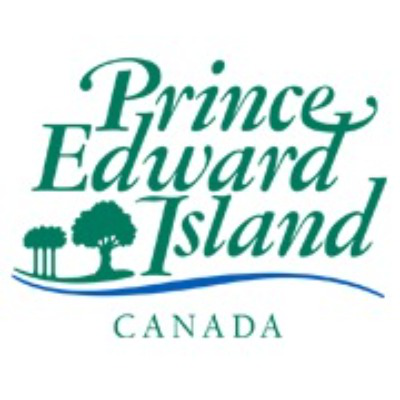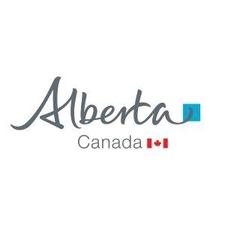HTML
Type of resources
Available actions
Topics
Keywords
Contact for the resource
Provided by
Formats
Representation types
Update frequencies
status
-

Interactive map that lists major traffic obstacles on the Repentigny road network.**This third party metadata element was translated using an automated translation tool (Amazon Translate).**
-

Stems per hectare - hardwood (SPHHWD) is an expression of the number of merchantable hardwood trees on a per-hectare basis. Available here as hardwood stems per hectare raster (GeoTIF) with a 20 m pixel resolution. Download: Here The Saskatchewan Ministry of Environment, Forest Service Branch, has developed a forest resource inventory (FRI) which meets a variety of strategic and operational planning information needs for the boreal plains. Such needs include information on the general land cover, terrain, and growing stock (height, diameter, basal area, timber volume and stem density) within the provincial forest and adjacent forest fringe. This inventory provides spatially explicit information as 10 m or 20 m raster grids and as vectors polygons for relatively homogeneous forest stands or naturally non-forested areas with a 0.5 ha minimum area and a 2.0 ha median area. Stems per hectare - hardwood (SPHHWD) is an expression of the number of merchantable hardwood trees on a per-hectare basis. SPHHWD is available here as a color-mapped 16-bit unsigned integer raster grid in GeoTIFF format with a 20 m pixel resolution. An ArcGIS Pro layer file (*.lyrx) is supplied for viewing SPHHWD data in the following 500 stems/ha categories. Domain: [NULL, 0…100,000]. RANGE LABEL RED GREEN BLUE 0 <= SPHHWD < 250 0 NA NA NA 250 <= SPHHWD < 750 500 63 81 181 750 <= SPHHWD < 1250 1000 67 112 147 1250 <= SPHHWD < 1750 1500 72 144 114 1750 <= SPHHWD < 2250 2000 76 175 80 2250 <= SPHHWD < 2750 2500 136 195 73 2750 <= SPHHWD < 3250 3000 195 215 66 3250 <= SPHHWD < 3750 3500 255 235 59 3750 <= SPHHWD < 4250 4000 255 207 39 4250 <= SPHHWD < 4750 4500 255 180 20 4750 <= SPHHWD < 5250 5000 255 152 0 5250 <= SPHHWD < 5750 5500 251 124 18 5750 <= SPHHWD < 6250 6000 248 95 36 6250 <= SPHHWD < 6750 6500 244 67 54For more information, see the Forest Inventory Standard of the Saskatchewan Environmental Code, Forest Inventory Chapter.
-

This dataset of Crown land includes land managed by the Department of Natural Resources and Energy Development (DNRED). Creation – The data was created in the 90s using the codes from the Forest Cover data. In Early 2000 a project was undertaken to correct the errors in ownership that was present in the data. The project compared the data to that of Service New Brunswick and where there were discrepancies in DNRED’s ownership some research was done to correct DNRED’s data, SNB’s data or both. The data is constantly being updated as the department disposes of and/or acquires land, or new survey plans are prepared providing the location of the boundary. Other updates may be done to correct errors after some research has been done on ownership of land. Level of accuracy can vary from boundaries based on the Grant Reference Plans to a survey prepared by a Registered New Brunswick Land Surveyor.
-

This layer contains point features that represent the locations of exploration drillholes in New Brunswick. Geological data collected from exploration drillholes (core) are useful for mineral exploration and bedrock mapping. These data were compiled using archived mineral assessment reports of work (1950s to present), mining lease documents, and other sources. Data accuracy is variable depending on the source.
-

Stems per hectare - softwood (SPHSWD) is an expression of the number of merchantable softwood trees on a per-hectare basis. Available here as softwood stems per hectare raster (GeoTIF) with a 20 m pixel resolution. Download: Here The Saskatchewan Ministry of Environment, Forest Service Branch, has developed a forest resource inventory (FRI) which meets a variety of strategic and operational planning information needs for the boreal plains. Such needs include information on the general land cover, terrain, and growing stock (height, diameter, basal area, timber volume and stem density) within the provincial forest and adjacent forest fringe. This inventory provides spatially explicit information as 10 m or 20 m raster grids and as vectors polygons for relatively homogeneous forest stands or naturally non-forested areas with a 0.5 ha minimum area and a 2.0 ha median area. Stems per hectare - softwood (SPHSWD) is an expression of the number of merchantable softwood trees on a per-hectare basis. SPHSWD is available here as a color-mapped 16-bit unsigned integer raster grid in GeoTIFF format with a 20 m pixel resolution. An ArcGIS Pro layer file (*.lyrx) is supplied for viewing SPHSWD data in the following 500 stems/ha categories. Domain: [NULL, 0…100,000]. RANGE LABEL RED GREEN BLUE 0 <= SPHSWD < 250 0 NA NA NA 250 <= SPHSWD < 750 500 63 81 181 750 <= SPHSWD < 1250 1000 67 112 147 1250 <= SPHSWD < 1750 1500 72 144 114 1750 <= SPHSWD < 2250 2000 76 175 80 2250 <= SPHSWD < 2750 2500 136 195 73 2750 <= SPHSWD < 3250 3000 195 215 66 3250 <= SPHSWD < 3750 3500 255 235 59 3750 <= SPHSWD < 4250 4000 255 207 39 4250 <= SPHSWD < 4750 4500 255 180 20 4750 <= SPHSWD < 5250 5000 255 152 0 5250 <= SPHSWD < 5750 5500 251 124 18 5750 <= SPHSWD < 6250 6000 248 95 36 6250 <= SPHSWD < 6750 6500 244 67 54For more information, see the Forest Inventory Standard of the Saskatchewan Environmental Code, Forest Inventory Chapter.
-

A list of all Public Schools Branch and Commission scolaire de langue française schools.
-

Basal area - hardwood (BA_HWD) is an expression of hardwood site occupancy based on the cross-sectional area (m2 at breast-height) of merchantable stems on a per-hectare basis. Available here as a raster (GeoTIF) with a 20 m pixel resolution. Download: Here The Saskatchewan Ministry of Environment, Forest Service Branch, has developed a forest resource inventory (FRI) which meets a variety of strategic and operational planning information needs for the boreal plains. Such needs include information on the general land cover, terrain, and growing stock (height, diameter, basal area, timber volume and stem density) within the provincial forest and adjacent forest fringe. This inventory provides spatially explicit information as 10 m or 20 m raster grids and as vectors polygons for relatively homogeneous forest stands or naturally non-forested areas with a 0.5 ha minimum area and a 2.0 ha median area. Basal area - hardwood (BA_HWD) is an expression of hardwood site occupancy based on the cross-sectional area (m2 at breast-height) of merchantable stems on a per-hectare basis. BA_HWD is available here as a color-mapped 16-bit unsigned integer raster grid in GeoTIFF format with a 20 m pixel resolution. An ArcGIS Pro layer file (*.lyrx) is supplied for viewing BA_HWD data in the following 5 m2/ha categories. Domain: [NULL, 0…90]. RANGE LABEL RED GREEN BLUE 0 <= BA_HWD < 3 0 NA NA NA 3 <= BA_HWD < 8 5 63 81 181 8 <= BA_HWD < 13 10 66 103 157 13 <= BA_HWD < 18 15 69 125 133 18 <= BA_HWD < 23 20 72 147 110 23 <= BA_HWD < 28 25 75 169 86 28 <= BA_HWD < 33 30 108 186 76 33 <= BA_HWD < 38 35 150 200 71 38 <= BA_HWD < 43 40 192 214 66 43 <= BA_HWD < 48 45 234 228 61 48 <= BA_HWD < 53 50 255 225 52 53 <= BA_HWD < 58 55 255 206 38 58 <= BA_HWD < 63 60 255 186 24 63 <= BA_HWD < 68 65 255 167 10 68 <= BA_HWD < 73 70 254 147 3 73 <= BA_HWD < 78 75 252 127 16 78 <= BA_HWD < 83 80 249 107 29 83 <= BA_HWD < 88 85 247 87 41 88 <= BA_HWD <= 90 90 244 67 54For more information, see the Forest Inventory Standard of the Saskatchewan Environmental Code, Forest Inventory Chapter.
-

SK2 Woodland Caribou Habitat Potential
-

Forest Management in Canada 2020 Web Scene Web scene of Canada's Managed Forests, 2020. This web scene is used in the Story Map of Forest Management in Canada, 2020.
-

The distribution of Property - Municipal Boundaries data to the public is provided by AltaLIS Ltd., distributing agent for the Alberta Data Partnerships Ltd. (ADP), formerly Spatial Data Warehouse Ltd. (SDW), on behalf of the Government of Alberta. The Property - Municipal Boundaries data includes a GIS-ready mapping database created by Alberta Environment and Parks and includes the following: Counties, MD’s, Special Areas, Improvement Districts, Cities, Towns, Villages, Summer Villages and Hamlets. This product is available from AltaLIS Ltd. under the Province of Alberta’s ‘Open Government Licence’.
 Arctic SDI catalogue
Arctic SDI catalogue